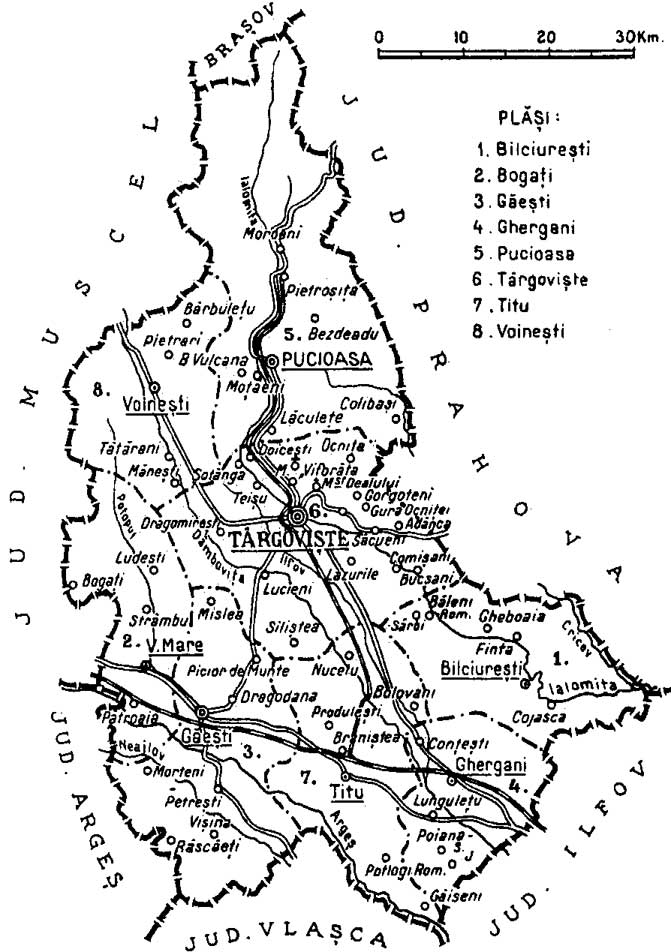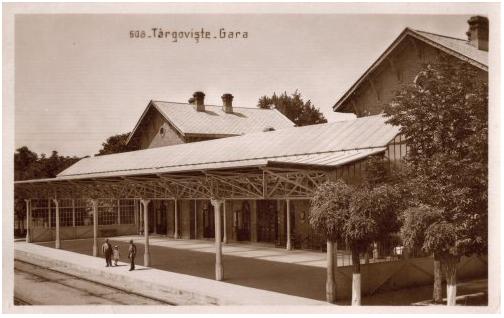|
Vișinești
Vișinești is a commune in Dâmbovița County, Muntenia, Romania with a population of 1,586 people as of 2021. It is composed of four villages: Dospinești, Sultanu, Urseiu, and Vișinești. The commune is located in the northeastern part of the county, on the border with Prahova County. The nearest towns are Pucioasa, to the west, and Moreni, 20 km to the south; the county seat, Târgoviște, is to the southwest, while the city of Câmpina Câmpina () is a city in Prahova County, Romania, north of the county seat Ploiești, located on the main route between Wallachia and Transylvania. Its existence is first attested in a document of 1503. It is situated in the historical region of ... is 20 km to the east, in Prahova County. References Communes in Dâmbovița County Localities in Muntenia {{Dâmboviţa-geo-stub ... [...More Info...] [...Related Items...] OR: [Wikipedia] [Google] [Baidu] |
Dâmbovița County
Dâmbovița County (; also spelt Dîmbovița) is a county () of Romania, in Muntenia, with the capital city at Târgoviște, the most important economic, political, administrative and cultural center of the county. It is a traditional administrative unit, first attested in 1512. Demographics In 2021, it had a population of 479,404 and the population density was 120/km2. It is one of the most densely populated counties in Romania. * Romanians – 87.09% * Roma - 3.96% * Bulgarians - 0.31% * Serbians 0.1% * Others - 0.13% * Unknown - 8.41% Name The county is named after the Dâmbovița River, which is a name of Slavic origin, derived from ''Дъб, dâmb'', meaning "oak", as it once flowed through the oak forests of the Wallachian Plain. Geography Dâmbovița county has a total area of 4,054 km2 (1.7% of the country's surface). It is situated in the south-central part of the country, on the Ialomița and Dâmbovița river basins. The highest altitude is Omu Pe ... [...More Info...] [...Related Items...] OR: [Wikipedia] [Google] [Baidu] |
Commune In Romania
A commune (''comună'' in Romanian language, Romanian) is the lowest level of administrative subdivision in Romania. There are 2,686 communes in Romania. The commune is the rural subdivision of a Counties of Romania, county. Urban areas, such as towns and cities within a county, are given the status of ''Cities in Romania, city'' or ''Municipality in Romania, municipality''. In principle, a commune can contain any size population, but in practice, when a commune becomes relatively urbanised and exceeds approximately 10,000 residents, it is usually granted city status. Although cities are on the same administrative level as communes, their local governments are structured in a way that gives them more power. Some urban or semi-urban areas of fewer than 10,000 inhabitants have also been given city status. Each commune is administered by a mayor (''primar'' in Romanian). A commune is made up of one or more villages which do not themselves have an administrative function. Communes ... [...More Info...] [...Related Items...] OR: [Wikipedia] [Google] [Baidu] |
Muntenia
Muntenia (, also known in English as Greater Wallachia) is a historical region of Romania, part of Wallachia (also, sometimes considered Wallachia proper, as ''Muntenia'', ''Țara Românească'', and the rarely used ''Valahia'' are synonyms in Romanian). It is situated between the Danube (south and east), the Carpathian Mountains (the Transylvanian Alps branch) and Moldavia (both north), and the Olt River to the west. The latter river is the border between Muntenia and Oltenia (or ''Lesser Wallachia''). Part of the traditional border between Wallachia/Muntenia and Moldavia was formed by the rivers Milcov and Siret. Geography Muntenia includes București - Ilfov, Sud - Muntenia, and part of the Sud-Est development regions. It consists of nine counties entirely: * Brăila * Buzău * Călărași * Argeș * Dâmbovița * Giurgiu * Ialomița * Ilfov * Prahova And parts of four others: * Teleorman (the entire county with the exception of Islaz) * Vrancea (southern p ... [...More Info...] [...Related Items...] OR: [Wikipedia] [Google] [Baidu] |
Romania
Romania is a country located at the crossroads of Central Europe, Central, Eastern Europe, Eastern and Southeast Europe. It borders Ukraine to the north and east, Hungary to the west, Serbia to the southwest, Bulgaria to the south, Moldova to the east, and the Black Sea to the southeast. It has a mainly continental climate, and an area of with a population of 19 million people. Romania is the List of European countries by area, twelfth-largest country in Europe and the List of European Union member states by population, sixth-most populous member state of the European Union. Europe's second-longest river, the Danube, empties into the Danube Delta in the southeast of the country. The Carpathian Mountains cross Romania from the north to the southwest and include Moldoveanu Peak, at an altitude of . Bucharest is the country's Bucharest metropolitan area, largest urban area and Economy of Romania, financial centre. Other major urban centers, urban areas include Cluj-Napoca, Timiș ... [...More Info...] [...Related Items...] OR: [Wikipedia] [Google] [Baidu] |
Prahova County
Prahova County () is a county (județ) of Romania, in the Historical regions of Romania, historical region Muntenia, with the capital city at Ploiești. Demographics In 2011, it had a population of 762,886 and the population density was 161/km2. It is Romania's third most populated county (after the Municipality of Bucharest and Iași County), having a population density double that of the country's mean. * Romanians - 97.74% * Romani people in Romania, Romas and Minorities of Romania, others - 2.26% The county received an inflow of population who have moved here due to the industrial development. Geography This county has a total area of 4,716 km2. The relief is split in approximately equal parts between the mountains, the hills and the plain. In the North side there are mountains from the southern end of the Eastern Carpathians - the Curvature Carpathians group; and the Bucegi Mountains the Eastern end of the Southern Carpathians group. The two groups are separated ... [...More Info...] [...Related Items...] OR: [Wikipedia] [Google] [Baidu] |
Pucioasa
Pucioasa () is a town in Dâmbovița County, Muntenia, Romania. It administers six villages: Bela, Diaconești, Glodeni, Malurile, Miculești, and Pucioasa-Sat. The town is located on the middle course of the Ialomița (river), Ialomița River, north of Târgoviște, in the central, hilly area of the county, from its southern limit and from its northern limit. History The name of the town dates from 20 September 1649, when it was mentioned in a document as "Piatra Pucioasă" (meaning Sulfur, Brimstone, referring to the sulphur resources nearby). Natives * Alexandru Bădoiu (born 1981), footballer * Cristian Bălașa (born 1972), footballer * Romulus Ciobanu (born 1977), footballer * Grigoraș Diaconescu (born 1982), rugby union football player * (born 1943), mathematician, titular member of the Romanian Academy * Dumitru Popescu (footballer, born 1942), Dumitru Popescu (1942–1997), footballer * Florentin Rădulescu (born 1976), footballer References [...More Info...] [...Related Items...] OR: [Wikipedia] [Google] [Baidu] |
Moreni
Moreni () is a municipiu, municipality in Dâmbovița County, Muntenia, Romania, with a population of 15,472 as of 2021. The city is in the eastern part of the county, on the border with Prahova County. It is located east of the county seat, Târgoviște, and about north-west of Bucharest. History In 1861, Moreni became the first place in Romania (and third in the world) where Petroleum, oil was extracted. Recently, an industrial park was built by the local authorities to encourage investment in the area. Natives * Gheorghe Barbu (footballer), Gheorghe Barbu (1968–2021), footballer * Alberto Călin (born 2005), footballer * Constantin Herold (1912–1984), multi-sport athlete, basketball player and coach * Andrei Ivan (born 1997), footballer * Ralph S. Locher (1915–2004), American politician, mayor of Cleveland, Ohio * George Mihăiță (born 1948), actor and director * Ștefan Niculescu (1927–2008), composer * Costel Pană (born 1967), football manager and former ... [...More Info...] [...Related Items...] OR: [Wikipedia] [Google] [Baidu] |
Târgoviște
Târgoviște (, alternatively spelled ''Tîrgoviște'') is a Municipiu, city and county seat in Dâmbovița County, Romania. It is situated north-west of Bucharest, on the right bank of the Ialomița (river), Ialomița River. Târgoviște was one of the most important cities in the history of Wallachia, as it was its capital from 1418 to 1659. At the 2021 Romanian census, 2021 census, the city had a population of 66,965 people, making it the 27th largest in the country. Etymology The name ''Târgoviște'' is a Slavic name which the city acquired in the Middle Ages. It is derived from the old Slavonic word for "marketplace", referring to the place rather than the market itself. The name is found in placenames not only in South Slavic areas (Bulgarian , Serbian and Croatian '), but also in West Slavic such as Slovak ''Trhovište'', Czech ''Trhoviště'' or Polish ''Targowica, Lower Silesian Voivodeship, Targowica''. Additionally, places with the same name are found in Romania, ... [...More Info...] [...Related Items...] OR: [Wikipedia] [Google] [Baidu] |
Câmpina
Câmpina () is a city in Prahova County, Romania, north of the county seat Ploiești, located on the main route between Wallachia and Transylvania. Its existence is first attested in a document of 1503. It is situated in the historical region of Muntenia. Geography The city is located in the western part of Prahova County, northwest of the county seat, Ploiești. It is situated in a hilly region, at the southern end of the Prahova Valley, on the banks of the river Prahova, in between the rivers Câmpea and Doftana. Câmpina is crossed by national road DN1, which links Bucharest, to the south, with the northwestern part of the country. The Câmpina railway station (opened in 1879) serves the CFR Main Line 300, which runs parallel to DN1, on the right bank of the Prahova. History Formerly a customs point on the trade route between Transylvania and Wallachia, the town developed at the end of the 19th century and the beginning of the 20th century as an oil extraction a ... [...More Info...] [...Related Items...] OR: [Wikipedia] [Google] [Baidu] |
Communes In Dâmbovița County
A commune is an alternative term for an intentional community. Commune or comună or comune or other derivations may also refer to: Administrative-territorial entities * Commune (administrative division), a municipality or township ** Communes of Algeria ** Communes of Angola ** Communes of Belgium ** Communes of Benin ** Communes of Burundi ** Communes of Chile ** Communes of the Democratic Republic of the Congo ** Communes of France ** Communes of Italy, called ''comune'' ** Communes of Luxembourg ** Communes of Moldova, called ''comună'' ** Communes of Niger ** Communes of Romania, called ''comună'' ** Communes of Switzerland ** Commune-level subdivisions (Vietnam) *** Commune (Vietnam) *** Commune-level town (Vietnam) ** People's commune, highest of three administrative levels in rural China, 1958 to 1983 Government and military/defense * Agricultural commune, intentional community based on agricultural labor * Commune (rebellion), a synonym for uprising or revolutiona ... [...More Info...] [...Related Items...] OR: [Wikipedia] [Google] [Baidu] |




